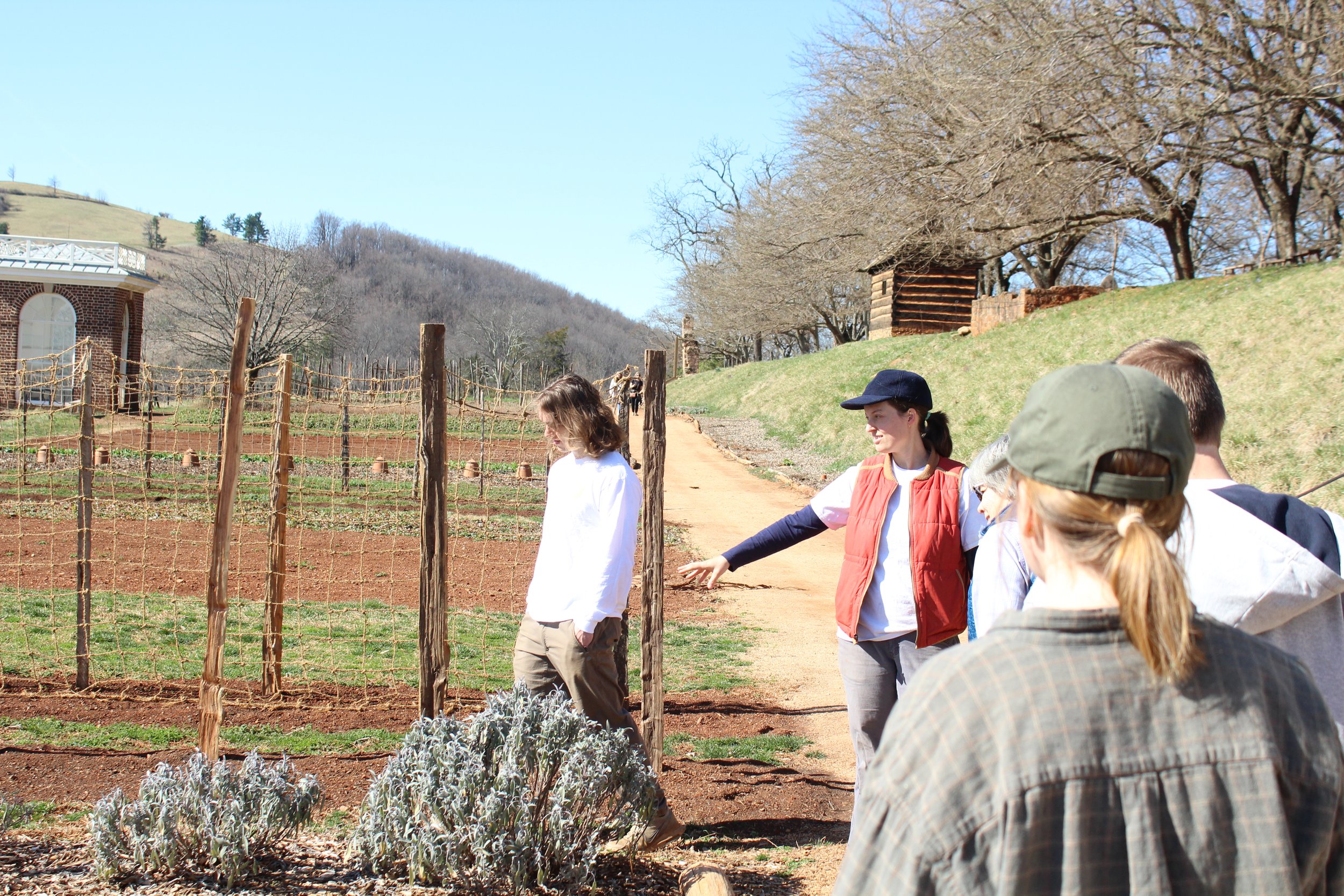Seed Saving at Monticello
Date: Monday, February 27th
Blog Post by Louis Bubrig, MKG Assistant Coordinator
This Friday, the Morven Kitchen Garden team visited the garden staff of Monticello to learn all about saving and storing seeds. We went straight to the experts: Monticello is home to many heirloom crop varieties straight from Thomas Jefferson’s time. The seeds of these varieties aren’t found at your average or even your niche seed supplier, so Monticello must do the leg work themselves to keep them going year after year.
A vast majority of farms and gardens buy new seeds at the start of every year (Morven Kitchen Garden is no exception) and that’s because collecting and processing seeds is an enormous amount of work, as we learned at Monticello.
First, seeds must be collected from the plant at just the right time. For almost all crops, this means sacrificing any food or economic potential of the plant, since seeds are typically ready for collection once the fruits are overripe or even dried and shriveled.
Some dried flower heads about to be processed
Second, seeds must be separated from the seed heads. Flower Gardener Debbie Donley showed us how to do it by throwing seed heads into a bag with some rocks and shaking. For big seeds like beans, that might be all it takes, once you pick out the big debris. But for tiny seeds like lettuce, this is just the beginning. Vegetable Gardener Michael Tricomi took us through the entire lettuce seed process. The starting point is a messy mixture of stalks, straw, fiber, dust, flakes, and other debris.
Somewhere in that mess are lettuce seeds…
You can take advantage of the difference in weight between the seeds and the debris: on a windy day, or by using a trusty box fan, debris can be blown off the pile, leaving seeds behind. Of course, too much wind—or the wrong angle—can easily send your precious seeds flying away, so be careful!
If conditions are right, you can also clean up your seeds by repeatedly picking them up and sprinkling them onto a plate. On the way down, debris has a chance of floating away.
Debbie Donley demonstrates how to winnow lettuce seeds
Michael says that they work on separating out seeds on rainy days, often working on winnowing the same batch of seeds over and over again across days or weeks to finally get it clean enough to sell.
Michael Tricomi shows off a cleaned bag of lettuce seeds, which looks a whole lot better than what we started with
After collecting and separating out your seeds, you need to store them in a cool dry place. Moisture and heat are the enemies of stored seeds. Other enemies include mice, moths, and even a particularly industrious squirrel that once broke into Monticello’s greenhouse.
A seed-stealing squirrel could be lurking around any corner.
Propagation
Some plants can be propagated through cuttings without needing to collect their seeds. For these plants, parts of their stem have the potential to sprout roots if buried. Rotating Gardener Jacob taught us the importance of leaving the cutting with enough leaf area to support the sprouting roots, but not so much leaf area that the young roots can’t keep up with their water demand.
Jacob shows how to select the perfect spot for a cutting on this begonia vine
Touring the gardens
Afterwards, Curator of Plants Peggy Cornett gave us a tour of Monticello’s vegetable and flower gardens where we saw their winter crops and historically-accurate trellising systems.
Fiona Flynn and Peggy Cornett point out some sage that has survived the winter
Now we’re really ready to ramp up our seed saving efforts at Morven Kitchen Garden!
The Morven Kitchen Garden team at Monticello (Hey, let us know if you want an MKG shirt!)








